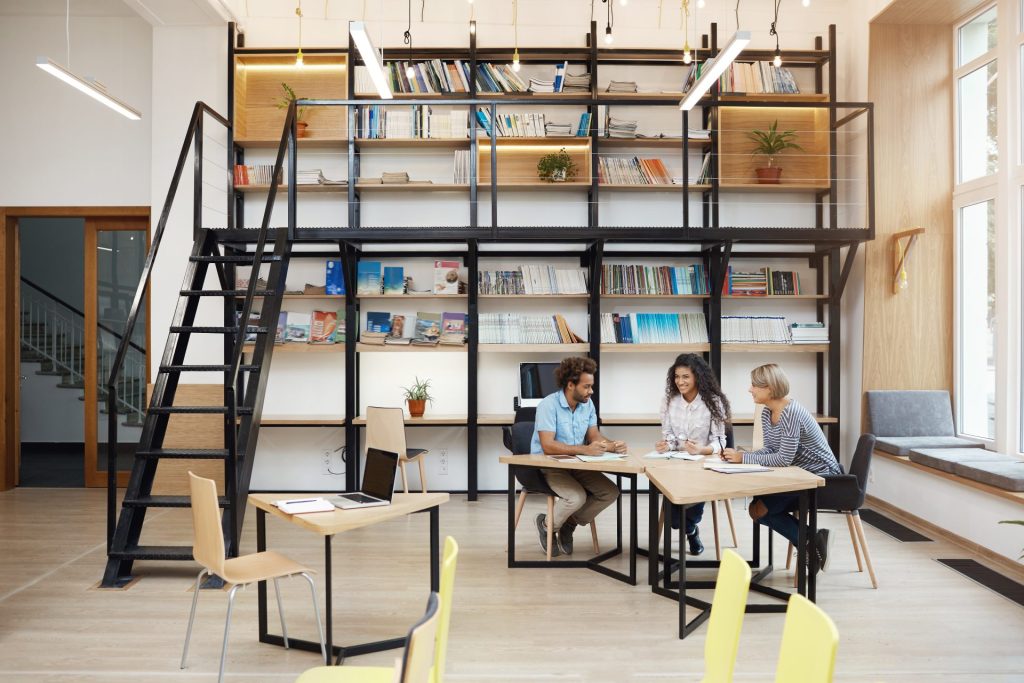
As Colorado navigates the aftermath of the pandemic, the landscape of office spaces undergoes a transformative evolution. The future of office spaces in Colorado is intricately linked to post-pandemic trends, with adaptability and resilience taking center stage. Investors keenly observe these shifts, considering the changing needs of tenants, market dynamics, and the role of technology.
This article will delve into the critical trends shaping the future of office spaces in Colorado, emphasizing the vital aspects that define the state’s commercial real estate in the post-pandemic era.
Why Commercial Real Estate Investors Consider Trends for Post-Pandemic Trends
Commercial real estate investors consider post-pandemic trends for several reasons, as these trends can significantly impact the value, demand, and viability of commercial properties. Here are some key reasons why investors pay close attention to these trends:
Adaptability and Resilience
Post-pandemic trends reflect the adaptability and resilience of commercial properties. Investors seek properties that can withstand economic uncertainties and changing market conditions, ensuring long-term value.
Changing Tenant Needs
The pandemic has altered how businesses operate and their spatial requirements. Investors consider trends to understand the evolving needs of tenants, such as the demand for flexible workspaces, health and safety considerations, and technology integration.
Market Demand and Supply Dynamics
Post-pandemic trends provide insights into the current and future demand for specific types of commercial spaces. Investors analyze these trends to make informed decisions about where to invest and what kinds of properties are likely to be in demand.
Risk Mitigation
Understanding post-pandemic trends allows investors to identify potential risks and vulnerabilities in the commercial real estate market. This awareness enables them to implement risk mitigation strategies, diversify their portfolios, and make informed investment decisions.
Return on Investment (ROI) Considerations
Investors assess post-pandemic trends to evaluate the potential ROI of commercial properties. For example, properties that align with trends such as remote work support or enhanced health and safety features may attract higher-quality tenants, leading to better long-term returns.
Legal and Regulatory Changes
Post-pandemic trends often coincide with changes in regulations and legal requirements. Investors track these trends to ensure compliance with new norms and to anticipate any potential impact on property values and operations.
Technology Integration
The increasing reliance on technology in the post-pandemic era is a crucial consideration for investors. Properties with advanced technology infrastructure and smart building features may have a competitive edge in attracting tech-savvy tenants.
Environmental, Social, and Governance (ESG) Factors
ESG investing considerations, including sustainability and social responsibility, have gained prominence in the post-pandemic era. Investors are increasingly mindful of properties that align with these values as they seek to meet the rising demand for environmentally conscious and socially responsible spaces.
Post-Pandemic Trends for Office Spaces in Colorado
In the wake of the pandemic, the future of office spaces in Colorado have undergone a transformative shift, embracing innovative trends that redefine the workplace. Here are the six post-pandemic trends shaping the future of work in the Centennial State.
1. Hybrid Work Environments
Post-pandemic, Colorado’s office spaces embraced hybrid work models, accommodating both remote and in-person work. This trend allowed companies to offer flexibility to employees while maintaining opportunities for collaboration, promoting a balanced and adaptable approach to work.
2. Tech-Driven Collaboration
The integration of advanced technology became integral to Colorado office spaces, fostering seamless virtual collaboration. With a focus on video conferencing, collaborative tools, and smart office solutions, businesses aimed to enhance connectivity and productivity, meeting the demands of a digitally transformed work environment.
3. Flexibility in Office Design
Adaptive office designs in Colorado prioritized flexibility, incorporating modular furniture and layouts. This allowed for dynamic configurations, responding to changing needs, and optimizing space usage for a more agile and versatile work environment.
4. Wellness-Centric Spaces
Colorado offices emphasize employee well-being, integrating features that promote mental and physical health. Spaces were designed to include open layouts, natural lighting, green elements, and dedicated areas for relaxation, fostering a healthier and more comfortable working environment.
5. Sustainable Office Practices
Post-pandemic, there was an increased focus on sustainability in Colorado’s office spaces. Businesses sought eco-friendly designs, energy-efficient solutions, and environmentally conscious practices to align with growing corporate responsibility and address the demand for greener workspaces.
6. Community-Centric Design
Offices in Colorado adopted community-centric designs, emphasizing collaborative spaces for in-person interactions. These designated areas aimed to nurture a sense of community, innovation, and teamwork, recognizing the continued importance of face-to-face collaboration in the evolving landscape of work.
The Future of Office Spaces in Colorado FAQs

Why do commercial real estate investors focus on post-pandemic trends in Colorado’s office spaces?
Commercial real estate investors closely monitor post-pandemic trends in Colorado’s office spaces because these trends directly impact the value, demand, and adaptability of commercial properties. Understanding these trends helps investors make informed decisions that align with the evolving needs of tenants and market dynamics.
What role does technology play in Colorado’s office spaces in the post-pandemic era?
Technology integration is crucial in Colorado’s post-pandemic office spaces. The adoption of advanced tech tools, video conferencing, and smart office solutions enhances virtual collaboration and productivity. Investors recognize the competitive edge of properties with robust technology infrastructure in attracting tech-savvy tenants.
How do post-pandemic trends impact the value of commercial properties in Colorado?
Post-pandemic trends, including the future of office spaces, play a crucial role in determining the value of commercial properties by reflecting their adaptability and resilience. Investors seek properties capable of withstanding economic uncertainties, ensuring long-term value, and mitigating risks associated with changing market conditions.
How have changing tenant needs influenced the commercial real estate market in Colorado?
The pandemic has significantly altered how businesses operate and their spatial requirements. Investors closely consider trends to understand the evolving needs of tenants, such as the demand for flexible workspaces, health and safety considerations, and technology integration. This understanding allows investors to align their investments with the shifting demands of the market.
Conclusion
Understanding the future of office spaces in Colorado is crucial for investors navigating post-pandemic shifts. Adapting to trends like hybrid work models, tech-driven collaboration, and wellness-centric designs reflects the resilience of commercial properties. With a focus on flexibility, sustainability, and community-centric layouts, Colorado’s office spaces are evolving to meet changing tenant needs and market dynamics in the ever-shifting landscape ahead.
At 3D Real Estate, we understand the dynamic landscape of post-pandemic office spaces in Colorado. Let us guide you through the evolving trends and help you find commercial properties that perfectly align with your business needs and investment goals. Contact us today!




